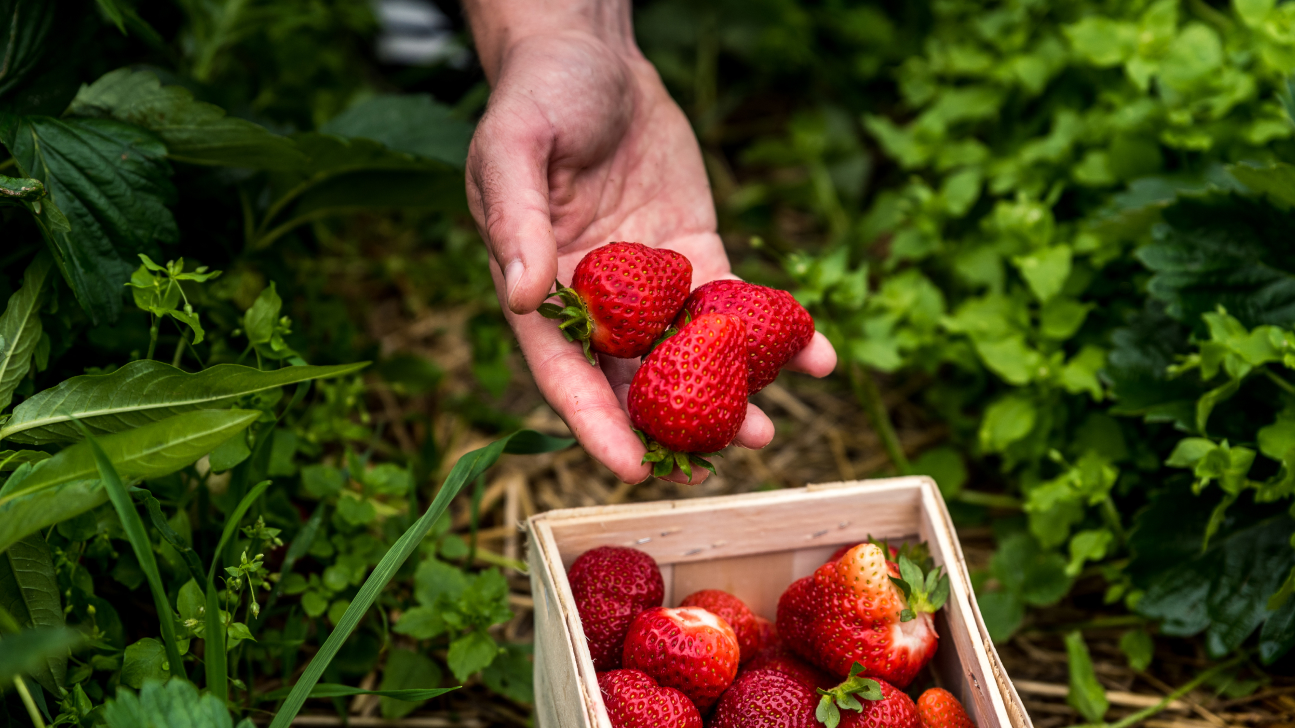Forecasting crop yields in an era of extreme weather
Thursday, January 23, 2025

Over the course of his career, Fakhri Karray, Professor of Machine Learning at MBZUAI, has worked to design intelligent machines and systems that can benefit society. These technologies have spanned many fields, including transportation, manufacturing, healthcare and agriculture.
Karray, who served as the Loblaws research chair in AI at the University of Waterloo in Canada, and was a founding co-director of the university’s AI Institute before joining MBZUAI, has been particularly interested in pursuing projects where tools of artificial intelligence and machine learning can be used to promote sustainability.
Along with colleagues from the University of Waterloo, he is co-author of a study that explores how historical climate and agricultural data can be used to help forecast crop yields. The research focuses specifically on the relationship between extreme temperatures and the impact they have on strawberry yields in an area of California that is the most prolific strawberry-producing region in the world.
Extreme weather is becoming more frequent across the globe due to climate change. In 2023, for example, unusually cold and wet weather in California resulted in a $100 million loss to the strawberry industry that had far reaching implications. Similar patterns occurred around the world during that year with global losses of more than $600 million. Better predictions about a harvest may have benefits for consumers, farmers and the wider agricultural industry.
What’s more, Karray and his colleagues note that their findings have the potential to help scientists gain a better understanding of the vulnerabilities of agricultural systems in an era of climate change that has been marked by extreme weather across the globe.
Pricing a berry
There are many factors that influence the price consumers pay for fruits and vegetables and pricing is a complex activity shaped by different actors and market conditions. Retailers often negotiate prices to purchase crops from producers well before the crop is even planted. This negotiated price is based on past prices and forecasts for the coming growing season that relate to the amount of crop farmers will plant and expectations for the weather. Sometimes, of course, these forecasts turn out to be wrong.
If the yield of a crop in a growing season turns out to be significantly below what is expected, retailers need to increase the price consumers pay so that they can cover their own costs. “In some recent years, the industry has been unable to accurately forecast the price of the crop before the seeds are planted,” Karray says. “This has affected the whole supply chain, from the growers to the retailers to the consumers, and prices have at times gotten out of control.”
Climate’s impact on prices
Over the years, scientists have developed several methods for modeling the relationship between climate and crop yield. These approaches have tended to work well for specific crops grown in certain regions. They are, however, less accurate when they must account for extreme fluctuations in the weather that are increasing in frequency with global climate change.
Karray explains that there is therefore the need for new models “that can account for uncertainty and variability, offering a more accurate approach for and risk assessment”. With this study, Karray and his colleagues are seeking to improve what is known as “extreme value prediction” and they do this by building a statistical model that can incorporate the uncertainties and interdependencies between weather extremes and yield.
Strawberries are good crops for this kind of analysis. The plants are sensitive to variations in temperature, as the variations affect the way the plants process nutrients and carry out photosynthesis. High temperatures can slow plants’ development and reduce the quality of the fruit they produce.
The right data for analysis
Karray and his team analyzed data collected between 2011 and 2019 by growers in the Santa Maria Valley, a major agricultural region approximately 150 miles north of Los Angeles that produces 80% of the strawberries grown in the U.S. The researchers also analyzed temperature data for this period that was gathered by the State of California. “We have relied on a group of entities to provide us with these datasets,” Karray says. “Without one of them, we might not have had adequate data for this kind of forecasting.”
Growers in the area use a technique called drip irrigation to water their plants. The technique is in large part standardized across the region, so the researchers didn’t account for precipitation in their model. Past studies have also shown that the correlation between crop yield and precipitation is less strong than is the correlation between yield and temperature.
Karray and his colleagues employed what is known as a multivariate probabilistic analysis of the data, which is a method used to predict outcomes where multiple variables are at play and there is uncertainty about how the variables influence each other. They also used a statistical technique called a vine copula, which is useful in illuminating dependencies between variables. (In this case, the variables were monthly maximum strawberry yield, monthly minimum strawberry yield and monthly temperature anomaly.) The technique gets its name because it “couples” multivariate joint distributions to the individual variables’ distributions. Copulas have often been used in other fields, including finance and economics.
In addition to the multivariate analysis, the researchers conducted univariate analyses, which focused only on the distributions of individual variables. These, however, tended to underestimate the likelihood of events that led to crop loss and overlooked “the intricate relationship between temperature anomalies and crop yields,” the researchers explained in the study.
Multivariate copula analysis, on the other hand, allowed for a more accurate assessment of the conditional probabilities of the variables and illuminated the “joint dependence structure between variables.” The researchers found that a temperature anomaly of more than 3 degrees Fahrenheit was likely to result in a reduction in yield.
While their findings provide insight into the relationship between extreme temperatures and strawberry crop yield, the researchers note that any kind of extrapolation of these findings to other regions or crops should be done with caution. They also write that they would like to study similar data on a longer timescale, which might provide more insights into how temperature extremes and their effects are changing over time.
Global challenge, global solution
A better understanding of the way extreme temperatures affect crop yields may help farmers and the agricultural industry prepare for a world in which the climate is ever more volatile. That said, addressing climate change is a monumental task.
Karray believes that while scientists can develop artificial intelligence systems that help to reduce the impacts of climate change, comprehensive solutions will require the cooperation of governments, businesses and society at large. “The planet is under huge pressure today and changes in the weather are going to affect everyone on the planet,” he says.
And even if the increase in global temperatures can’t be reversed or arrested, Karray notes that some of the most catastrophic impacts from climate change could be lessened if we are able to mitigate the severity of weather extremes and anomalies that have become all too common in recent years.
For more information about this study or related work, please reach out to Prof. Karray.
- machine learning ,
- sustainability ,
- statistics ,
- climate ,
- environment ,
- food ,
- forecasting ,
Related
Mind meld: agentic communication through thoughts instead of words
A NeurIPS 2025 study by MBZUAI shows that tapping into agents’ internal structures dramatically improves multi-agent decision-making.
- agents ,
- neurips ,
- machine learning ,
Balancing the future of AI: MBZUAI hosts AI for the Global South workshop
AI4GS brings together diverse voices from across continents to define the challenges that will guide inclusive AI.....
- llms ,
- representation ,
- equitable ,
- global south ,
- AI4GS ,
- event ,
- workshop ,
- languages ,
- inclusion ,
- accessibility ,
- large language models ,
Special delivery: a new, realistic measure of vehicle routing algorithms
A new benchmark by researchers at MBZUAI simulates the unpredictable nature of delivery in cities, helping logistics.....
- computer vision ,
- conference ,
- neurips ,
- machine learning ,
- research ,
- benchmark ,
- logistics ,
- delivery ,


